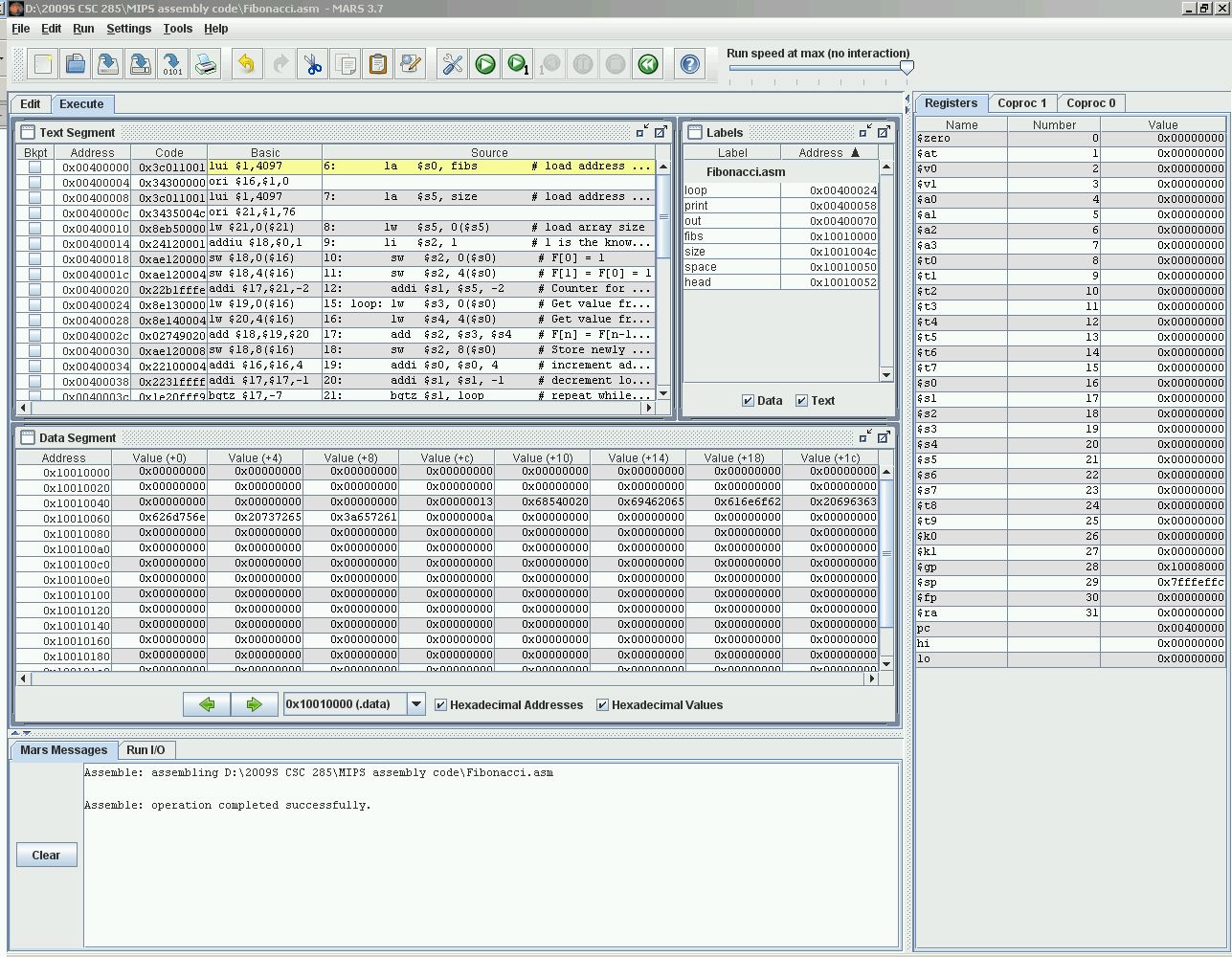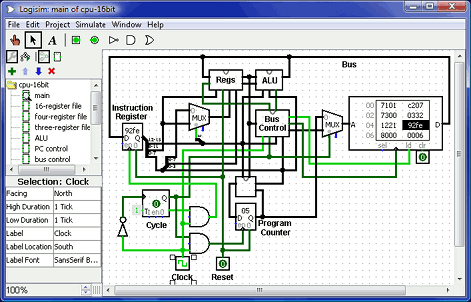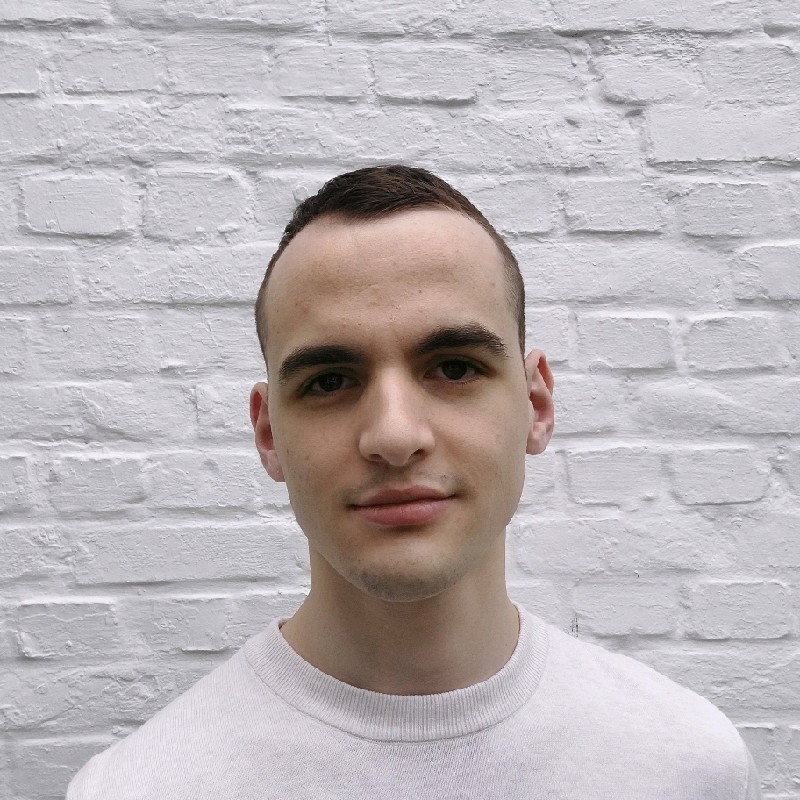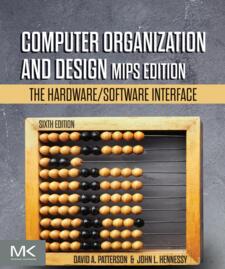|
You can find slides of the "proefles" for this course held on Tuesday 21 February 2023 here. On this page you will find information about the course "Computersystemen en -architectuur"
This page is written in English for the benefit of foreign (Erasmus) students. Note that the course is taught in Dutch however!
This course consists of two tightly interwoven parts:
Contact Information
Textbook
For which parts of the book correspond to which lecture, have a look at the overview of what to study for the exam. ExamsFirst Session
Your total score for this course is calculated as follows:
Second Session
Exemptions Across Academic Years
In case you did not pass the course in year N, (partial) exemptions may be granted in year N+1. These exemptions are always determined on a case-by-case basis. You need to request exemptions by e-mail to the prof. with the assistant in cc:. You will then receive a reply describing the exemption(s) granted. Keep that reply e-mail and send it back to the prof. (and assistant in cc:) before the exam period as an official reminder and proof that exemption(s) were granted. Note that if you do not request exemptions via e-mail, none will be granted implicitly. The general principle for exemptions in year N+1 is that you may receive a partial exemption for those parts of the course for which you obtained at least (greater than or equal) a score of 70% on that part of the course in year N. Parts are: (1) theory exam AND computer systems assignments during the term, (2) practical exam AND computer architecture assignments during the term. "AND" means that the minimum score of 70% is required for both components. Note that exemptions do not carry across more than one year (i.e., to year N+k, with k greater than 1). Theory
Lab SessionsIn each lab session, you will be given some assignments (Computer Systems) and/or a project (Computer Architecture). All assignments for Computer Systems are made individually, projects for Computer Architecture are solved in groups of two students. Assignments (CS)
The assignments for Computer Systems are made individually. Every assignment will clearly indicate what is to be done, the deadline, as well as how you need to send in the solutions.
The assignments can be found here. Projects (CA)
In each lab session, you will work on a project in pairs of two students. Projects build on each other, to converge into a unified whole at the end of the semester. During the semester, you will be evaluated three times. At these evaluation moments, you will present your solution of the past projects by giving a demo and answering some questions. You will immediately receive feedback, which you can use to improve your solution for the following evaluations. For every project, you submit a small report of the project you made by filling in verslag.html completely. A report typically consists of a summary of everything you implemented and an explanation of the choices you made in the implementation. Again, put all your files in a tgz archive. The name of that archive consists of your last and first name, without spaces. If, for example, your name is Jan De Smedt, the file name of your archive must be DeSmedtJan.tgz. The projects can be found here. Files
The HTML forms you will need for the solutions (right click, save as): You have to adapt the HTML-code manually (i.e., in notepad) to fill in the forms. A good HTML tutorial can help you with this. Remark: in the forms, the <u> element for underlining is redefined to "overline". This way, you can express NOT in Boolean algebraic expressions: e.g., NOT A OR B becomes A+B. Unfortunately, double overline is not possible. Of course, you can always use the NOT A OR B notation. Tools
Throughout the course we will use the following tools: Both tools require java to run. The tools are installed on the lab computers. If you would like to run a UNIX distribution on your own computer, we suggest Ubuntu. You can install Ubuntu next to your Windows using the Windows installer. After installation, you will be able to choose on startup between Windows and Ubuntu. If you would like to run Ubuntu inside your Windows, you can install Ubuntu on VirtualBox by following these steps. In order to copy files in Windows from and to servers (e.g., between your laptop and the studento.uantwerpen.be server) you can use WinSCP. You can simply use the scp command ("secure copy") if you are using UNIX. You can only access the studento.uantwerpen.be server from a university network or through a vpn connection (to access this page, open it after you are logged in to Blackboard). Blackboard caveats
The burden of timely submission of your work on Blackboard is on you! (late submissions are not accepted)
PlanningComputer SystemsProgram of the lab sessions
Session 1: Introduction to UnixExercises on Unix shell commands. These exercises are not graded. However, they are an important preparation for the UNIX project which is graded! Material: Session 2: Regular ExpressionsExercises on Regular Expressions and the use of grep and sed. These exercises are not graded. However, they are an important preparation for the UNIX project which is graded! Material: Session 3: UNIX ScriptingExercises on UNIX Scripting in Bash. These exercises are not graded. However, they are an important preparation for the UNIX project which is graded! Material: Session 4: UNIX ProjectIn this assignment you will apply the things you have learned in the past sessions. This assignment has to be handed in on the Inginious platform and will be graded. Material: Intermezzo: viTo be announced Session 5: Data RepresentationIn this assignment you will apply the things you have learned in the theory lectures about data representation. This assignment has to be handed in on Blackboard and will be graded. Material: Session 6: MIPS: IntroductionIn this assignment we will become familiar with the MIPS assembly language. This assignment has to be handed in on the Inginious platform and will be graded. Session 7: MIPS Project part 1: ComponentsFor the MIPS project you will have to make a video game. In this assignment we will first build a number of components that will be used in the next assignment. This assignment has to be handed in on Blackboard and will be graded.
Below you can find a number of template files, which you will have to use to write down your code: These two text files can be used to see if your file reader works correctly: Session 8: MIPS Project part 2: GameFor this assignment you will combine the components you made during the previous sessions into a fully working video game.
Session 9: MIPS Project part 3: automatically finding the exitFor this assignment you will extend the game with a DFS algorithm that can automatically find the exit.
Second SessionThe following assignments have to be handed in before Wednesday 16th August 2023, 22h00:
Computer ArchitectureProgram of the lab sessions
Project 1: Gates and WiresIntroduction to Logisim and the use of gates. Material: Project 2: AddersBuild an adder (ripple carry adder and carry lookahead adder). Material: Project 4: MemoryBuild a register file, counter, stack, and a finite State Machine for a traffic light. Material: Project 5: DatapathBuild a program counter and a datapath. Material: Project 6: Full DatapathAdd branch, jump and immediate instructions to the instruction set. Material: Second SessionThis is a variation on the projects of the first semester. The goal is to individually solve a variation of all projects, with the differences explained in the following assignment: |
| Maintained by Hans Vangheluwe. | Last Modified: 2023/09/13 01:16:43. |





